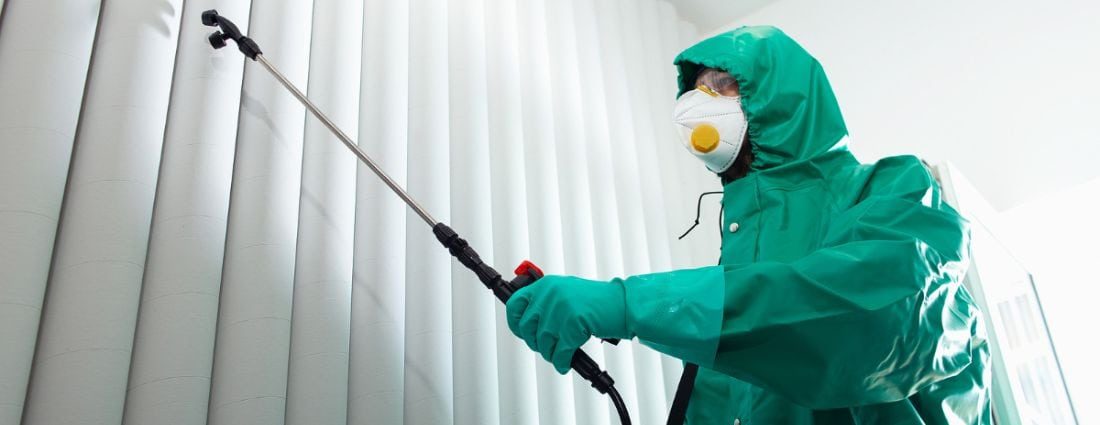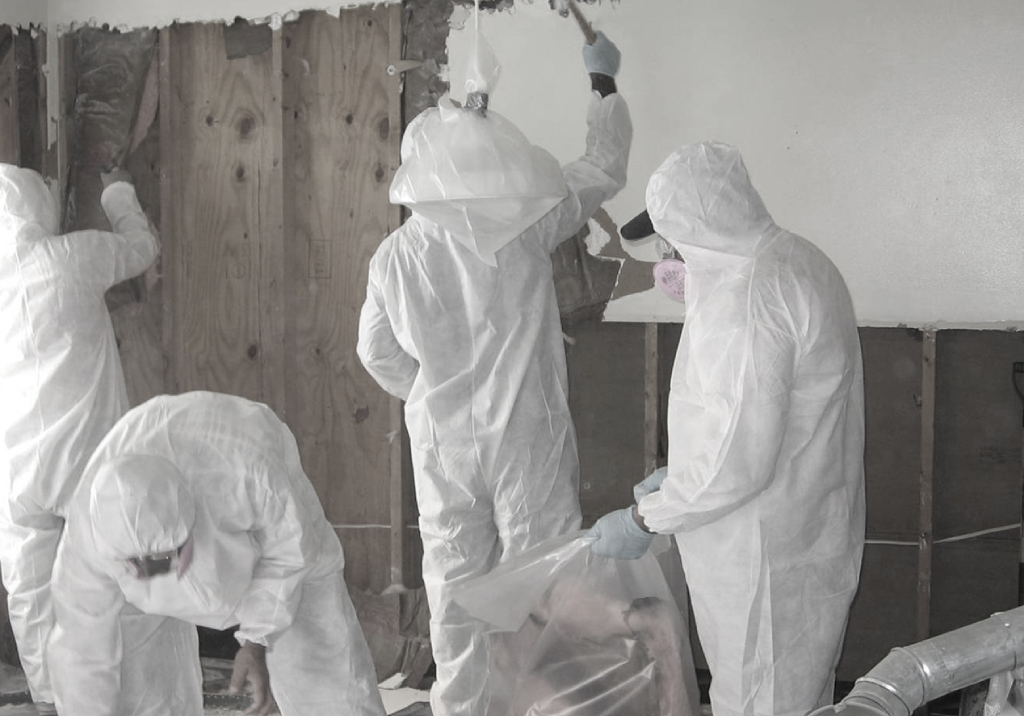Biohazard Removal: Safe Handling and Disposal of Hazardous Products
Biohazard Removal: Safe Handling and Disposal of Hazardous Products
Blog Article
Specialist Biohazard Cleaning and Purification for Blood, Bodily Fluids, and Hazardous Materials
In the realm of biohazard cleaning and purification for blood, physical fluids, and unsafe materials, accuracy and competence are vital. The prospective wellness risks related to exposure to biohazards underscore the important demand for thorough handling and detailed cleanup. Specialized training gears up professionals with the expertise and abilities essential to resolve these hazardous scenarios properly. Nevertheless, it is not simply regarding tidying up; the value of using appropriate decontamination methods can not be overemphasized. As we navigate the detailed landscape of biohazard clean-up, recognizing the nuances of regulations, conformity, and the specialized devices at play comes to be essential in ensuring a complete and risk-free decontamination process.
Health And Wellness Risks of Biohazard Direct Exposure
Exposure to biohazards postures significant health and wellness dangers that can result in extreme effects for neighborhoods and people alike. Biohazards include a variety of biological compounds, consisting of blood, physical liquids, mold, microorganisms, viruses, and other possibly infectious materials. When people come into call with these biohazards, whether through crashes, incorrect handling, or environmental exposure, they face the risk of having major illnesses or illness.
One of the primary wellness risks linked with biohazard direct exposure is the transmission of contagious diseases. Bloodborne microorganisms such as HIV, hepatitis B and C, and different microorganisms can be present in biohazardous products, posing a direct hazard to human health and wellness. Inhaling air-borne biohazards like mold spores or entering into call with contaminated surfaces can likewise lead to breathing issues, allergies, and other damaging wellness results.
Moreover, biohazard direct exposure can have long-term wellness implications, with some diseases manifesting years after the initial call (Blood Cleanup). Therefore, it is crucial to prioritize correct biohazard cleaning and decontamination to minimize these health threats and guarantee the safety and security of neighborhoods and people

Specialized Educating for Biohazard Cleaning
When it pertains to managing biohazard cleanup successfully and safely, specialized training plays a basic duty in guaranteeing correct decontamination procedures are complied with. Biohazard cleanup requires particular understanding and abilities to efficiently alleviate dangers connected with bloodborne pathogens, bodily fluids, and unsafe materials. Professionals learnt biohazard cleaning undertake rigorous guideline on exactly how to securely take care of, eliminate, and deal with biohazardous products to stop contamination and direct exposure.
Specialized training for biohazard clean-up covers an array of vital topics, including proper personal protective tools (PPE) use, bloodborne pathogen awareness, purification techniques, and unsafe waste disposal methods. Individuals learnt biohazard cleaning are outfitted with the essential know-how to analyze contamination degrees, determine possible dangers, and carry out suitable cleanup treatments in compliance with regulative criteria.
Continual training and education are extremely important in the field of biohazard cleaning to remain updated on the current purification technologies, safety procedures, and laws. By purchasing specialized training, biohazard cleanup professionals can properly react to emergency situation clean-up circumstances and guard both public health and wellness and the setting.
Value of Proper Purification Methods
Making use of proper decontamination strategies is critical in biohazard clean-up to properly lessen and get rid of unsafe materials wellness threats. Effective decontamination not just guarantees the removal of noticeable traces of blood, bodily liquids, and other biohazards however likewise targets invisible virus that might posture major health threats if not appropriately removed. By following rigid decontamination protocols, educated professionals can considerably minimize the risk of exposure to unsafe microbes, infections, and microorganisms that can cause infections or illness.
Proper decontamination methods include the usage of specialized devices and disinfectants that are particularly developed to reduce the effects of biohazards efficiently. Complete cleaning and disinfection of contaminated areas are necessary to prevent the spread of microorganisms and make certain a safe environment for passengers. Furthermore, the correct disposal of biohazardous waste following decontamination procedures is important in stopping contamination of various other surface areas or people.

Equipment and Devices for Safe Cleanup
The appropriate equipment and tools play an essential duty in guaranteeing the risk-free and effective cleanup of biohazardous materials. When taking care of blood, bodily fluids, or hazardous materials, biohazard cleaning experts rely on specialized equipment to minimize direct go now exposure risks check it out and completely decontaminate the affected area. Personal protective devices (PPE) such as gloves, coveralls, safety glasses, and masks are important to protect versus straight contact with potentially infectious products. Additionally, biohazard cleansing kits having disinfectants, absorbent materials, and biohazard bags are used to securely get rid of and include of polluted things. Blood Cleanup.
Advanced cleansing devices like hospital-grade disinfectants, HEPA-filtered vacuums, and misting makers are utilized to disinfect surface areas and remove biohazards effectively. Specialized devices such as sharps containers and biohazard garbage disposal containers are used to securely take care of sharp items and biohazardous waste materials. By using the best equipment and devices, biohazard cleaning professionals can ensure a detailed cleaning process that focuses on safety and security and minimizes health threats for both workers and passengers of the damaged space.
Regulations and Compliance in Biohazard Cleaning
Appropriate adherence to regulations and compliance requirements is vital in biohazard cleansing to make sure the security of both employees and the atmosphere. Federal government companies such as OSHA (Occupational Safety and Health Administration) and the EPA (Epa) have actually developed certain guidelines for biohazard cleanup treatments to decrease health threats and ecological contamination. These regulations cover an array of facets consisting of the handling, transportation, and disposal of biohazardous materials, as well as the essential training and safety equipment required for workers associated with the cleanup procedure.
Biohazard cleansing companies need to stay updated with these laws to assure that their procedures fulfill the called for security criteria. Failure to follow these regulations can result in serious consequences, consisting of penalties, lawsuit, and jeopardizing the health of individuals and the environment. By following strict regulations and conformity procedures, biohazard cleansing companies can successfully minimize threats and make sure a risk-free and detailed cleanup procedure for all parties involved.
Verdict
Finally, biohazard cleaning and decontamination call for specialized training, proper strategies, and adherence to regulations. Exposure to blood, bodily liquids, and dangerous materials presents substantial wellness threats, making it vital to utilize the ideal tools and devices for secure cleaning. By complying with stringent protocols and guidelines, professionals can properly mitigate the dangers connected with biohazard direct exposure and make certain the security of both themselves and others.
As we browse the intricate landscape of biohazard cleanup, comprehending the nuances of laws, conformity, and the specialized devices at play becomes imperative in ensuring a risk-free osha blood clean up regulations and thorough purification procedure. (Blood Cleanup)
When it comes to handling biohazard cleaning efficiently and safely, specialized training plays a basic role in ensuring appropriate decontamination treatments are adhered to.Utilizing appropriate purification techniques is crucial in biohazard cleanup to successfully eliminate harmful materials and lessen wellness dangers. Additionally, biohazard cleaning kits containing disinfectants, absorptive materials, and biohazard bags are utilized to securely dispose and consist of of infected items.
Government agencies such as OSHA (Occupational Safety And Security and Wellness Management) and the EPA (Environmental Defense Agency) have actually established specific guidelines for biohazard clean-up procedures to minimize wellness threats and environmental contamination.
Report this page